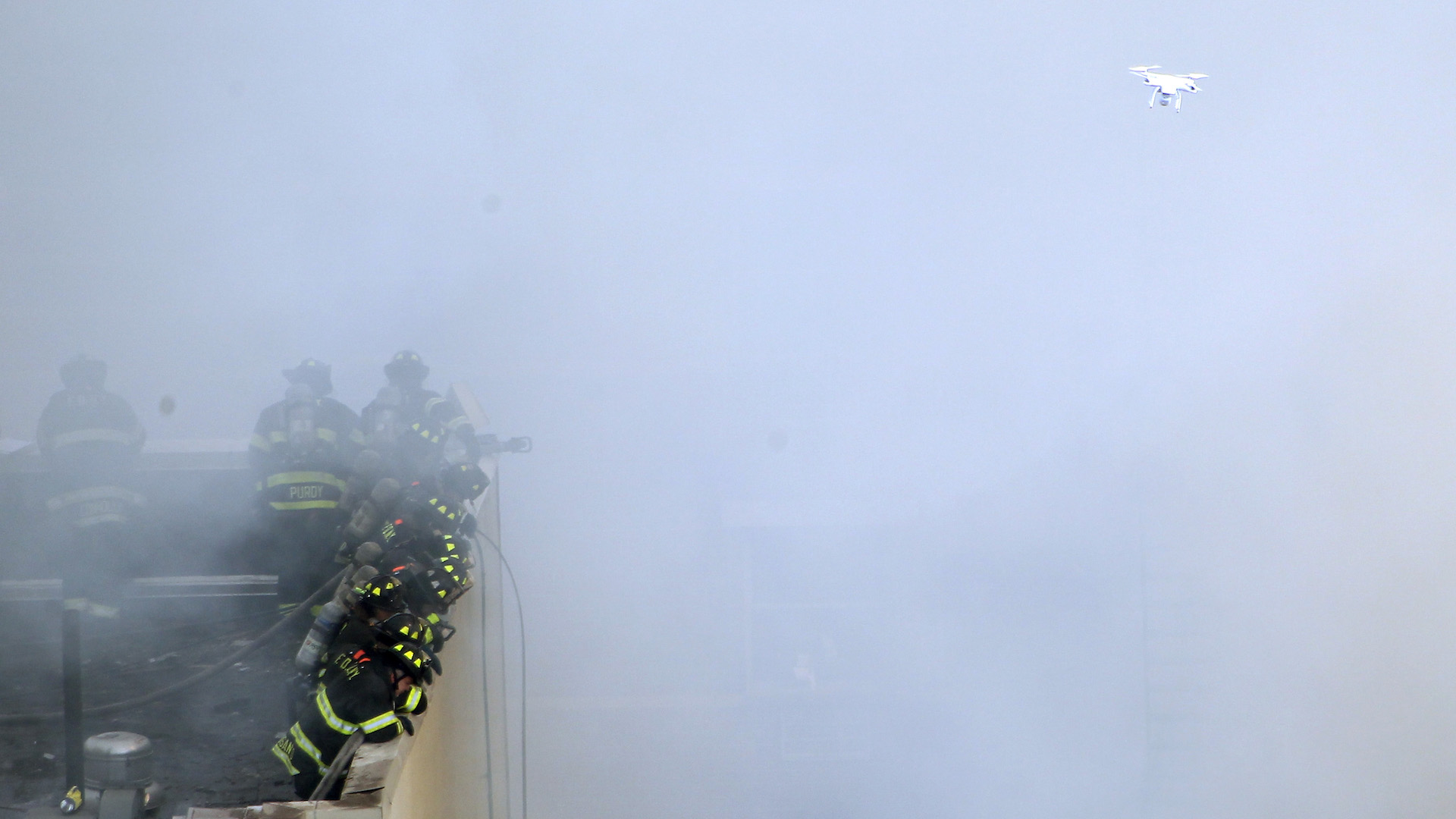

We’ve seen search-and-rescue teams implement drones in numerous ways, from monitoring the structural integrity of the Grenfell Tower in London to lifeboat crews infusing their day-to-day operations with drones. The unmanned aerial vehicle has become such a thoroughly helpful tool for first responders that companies like Parrot have begun to develop drones specifically targeted at public safety. The infrequent glimpses into this intersection between drones and firefighting, however, provide us only with an incomplete data-set. Fortunately, the fine folks at Dronefly have provided a well-rounded look at exactly when, where, and how drones are used in firefighting are used.
The primary use-case here is obvious: Having a drone at your disposal upon arrival at a life-threatening situation not only allows for people to stay out of harm’s way but from an extremely beneficial vantage point. It’s no surprise that law enforcement is keen on UAVs, as well, as they seem to reduce risk and increase useful data that can aid in developing a more informed strategy. Besides providing a bird’s-eye view, however, are UAVs really that much of a game-changer for firefighters? According to Dronefly‘s infographic, a recent estimate by Goldman Sachs estimates the global drone-related firefighting industry is currently up to $881 million. Here is where that money is spent.

First things first, in the last eight years, over 19 percent of agencies in public safety that purchased UAVs were fire departments. That’s almost a fifth of total drones in public safety going toward firefighting. This impressive ratio definitely tells us the aerial tool is popular in the industry, but what kinds of UAVs, exactly, are being utilized? Reportedly, DJI is quite popular with fire departments, particularly the Zenmuse XT and Z30 models, as well as the Matrice 210 and Inspire 1 v2.0.
Now that we know about this industry’s evaluation, and which particular drone equipment is used routinely by firefighters, let’s take a look at the use-cases. According to Dronefly, these are the most significant areas of drone-use for this particular job.
Monitoring
Making the most informed decision means gathering as much data as possible, particularly if you’re in charge of sending boots on the ground into potential danger. It makes sense, then, to use drones to get the best available look at a fire before developing a strategy. Thermal imagery has potentially become the most useful aspect of drones in firefighting, as they can point toward the hottest and coolest areas of a building, look through smoke or other visibility-reducing elements, and thereby aid in deciding how best to approach the situation. Reportedly, drones equipped with the proper gear can also be used as floodlights during nighttime missions, further assisting those on the ground with improved visibility.
Search and Rescue
Even if you’ve only been following the drone industry peripherally, you’re aware of the basics regarding drones in search-and-rescue operations. UAVs give responders a clear bird’s-eye view regardless of time of day and provide them with immediate data while allowing them to remain safe. We recently reported on an 81-year old woman, who was lost in a field, who was found via drone. Drones are largely responsible for saving a dog’s life. What about the missing hikers in Scotland? That’s right. Drones did that.
Post-Event Assessment
Drones can capture high-quality imagery and footage throughout and post-disaster. We’ve recently seen this with the aftermath of Hurricane Harvey, where insurance companies are able to more rapidly develop estimates, or the Federal Aviation Administration realizing that UAVs could actually benefit post-disaster assessment. Even companies like Rocketmine are using UAVs to assess its operations, by analyzing the footage afterward and garnering more informative, data-driven accounts. In firefighting, drones analyze the damage, spot any survivors not visible from the ground, and utilize the recorded footage for future training or re-evaluation.
Wildfires
During the recent Los Angeles wildfires, local authorities complained about recreational drone users impeding the search-and-rescue efforts. That should never happen, and hobbyists need to learn when to keep their UAVs grounded. However, drones are a powerful tool when it comes to surveying fires growing out of control, as they can immediately re-assess which areas on the ground are becoming more dangerous, and which areas require immediate attention. It’s a tag-team operation, of sorts, between the eye in the sky and the firefighters attending to its data-driven directions.
Infographics like the one created by Dronefly put the many stories we absorb into perspective. You hear of drones being used to combat fires or rescue people and aren’t really clear on the details. It’s great to get a precise number and evaluation of funding, as well as what specific equipment is typically used, in which exact scenarios.